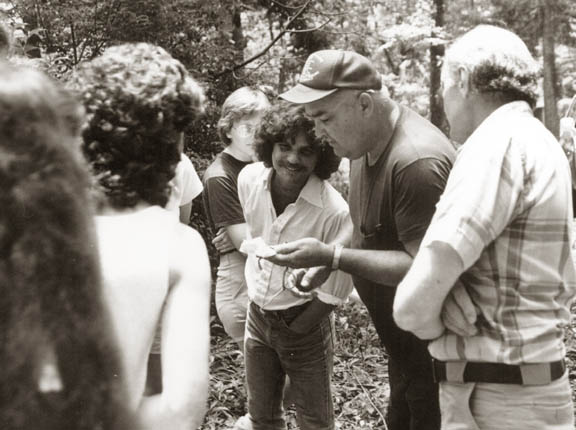SWINE IN EARLY FLORIDA
by F. Howard
January 19, 1995
1513, 1519, 1528, 1539. These are all early dates for European visitors to the shores of Florida. How did these hundreds of people find things to eat while they were here? Or better yet what did they eat?
In both the 1528 expedition by Narvaez and the 1539 expedition by DeSoto it seems, for the most part, they ate whatever the Indians had either stored, growing, or, already prepared to eat.
With one or two big exceptions. Recall that, near the end of his trip, near St. Marks, Narvaez and his some 300 followers had to eat their horses at the rate of one every other day while they built 5 small ships on which to leave. They saved the skins to use for water storage and to make sails for their escape vessels. They were losing too many men each time they sent out food raiding parties among the Indian houses.
The second exception was on the DeSoto expedition of 1539. DeSoto left the Tampa Bay area with some 500 followers driving several hundred enslaved Indian porters and a very large herd of swine.
 While working the DeSoto site in 1987, Calvin Jones shows the group chain mail discovered at the site. Gary Shapiro, the Director of Archaeology at San Luis 84-88, is on the left. |
DeSoto had heard about those earlier expeditions first hand as one of the 4 survivors of the Narvaez expedition had offered to join his. Perhaps that is why he had included such large number of pigs in his big fleet of supply ships. (Ham hocks with his corn and squash!)
One does not need a big imagination to see how Florida might get its first pig population when one learns how many times DeSoto's group was attacked by Indians along his trek to north Florida. Difficult to fight and corral pigs at the same time. DeSoto and his men (oddly enough, there were two women along also!) treated the local Indians very badly. Even to the point of feeding slain or wounded ones to their military attack dogs. The Spaniards even made great show of it. No wonder Indians from each village next in his line of march simply attacked first!
DeSoto arrived in our area (Tallahassee) to spend the winter of 1539-40. Recall, that in discovering the site of this encampment in Tallahassee (1987), B. Calvin Jones, State Archaeologist, also uncovered pig bones and horse teeth along with those coins and beads which dated the site.
The pigs are not mentioned here but are still being driven later in DeSoto's journey northwards. Most of the enslaved South Florida Indian porters died from the harsh winter during his stay here. A few of them escaped. Also, some of the horses got away. Perhaps some of the pigs also escaped.
